Arista Cables are a game changer in the ever-changing world of networking technology, especially for Direct Attach Copper (DAC) Twinax cables that transfer data at high speeds. This guide gives an overview of Arista Cables, illustrating their design, performance features, and use cases within data center setups. This article will explore the technical details, benefits, and some applications of DAC Twinax solutions to improve network performance and efficiency. This book is one resource that is vital for anyone who wants to understand how modern ways of connecting devices work but does not know where to start, whether they are network engineers or IT managers or just interested parties.
How do you test Arista Cables for quality and performance?
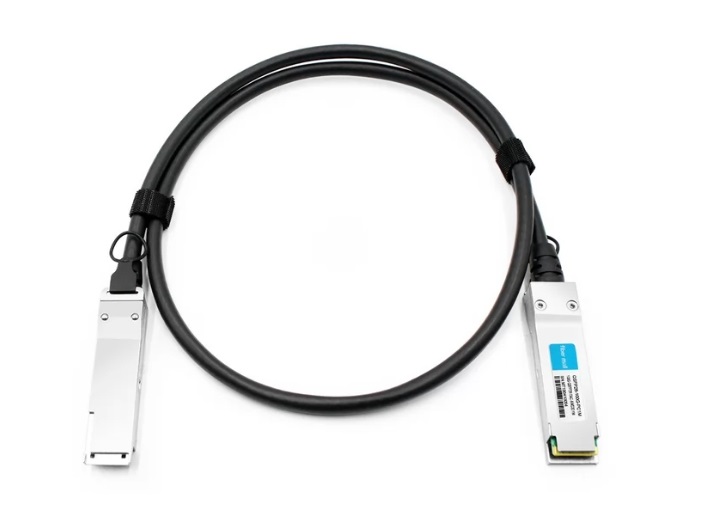
Why is testing Arista cables important?
Test Arista cables to ascertain their trustworthiness and efficiency in high-performance networks. Quality assurance through a reliable testing system helps identify potential faults that may result in signal problems and other negative network consequences. This step goes a long way in keeping data transmittal rates at optimal levels while minimizing risks of downtime due to bad connections. Further, consistent tests confirm adherence to the industry standards, thus boosting the confidence needed for DAC Twinax solutions to roll out into mission-critical applications. All organizations must test thoroughly if they are to avoid any connectivity failures along with making sure that networks last longer and remain effective thereby achieving their objectives without hindrances.
What are the methods for testing Twinax cables?
Different aspects of cable performance and integrity are tested using several methods for testing Twinax cables. Some major testing techniques are as follows:
- Time Domain Reflectometry (TDR): In this case, a pulse is passed through the cable and the reflections caused by impedance mismatches are measured. TDR is useful for detecting faults like breaks or shorts and also for determining the overall length and integrity of the cable.
- Insertion Loss Testing: This technique measures signal strength loss when a signal passes through a cable. The Twinax’s performance cannot be determined without calculating insertion loss since excessive losses can affect data transmission speeds. Normally, a network analyzer or a special insertion loss test set is used for this.
- Return Loss Testing: Like insertion loss, return loss testing examines signal reflections at discontinuities in the cable. High return losses suggest good impedance matching which are very important to get optimal performance. It aims to reduce any reflections interfering with signal quality.
Network professionals can use these testing techniques to ensure that their Twinax cables meet the required standards of performance and suitability in high-speed data center environments. Regular testing helps identify potential issues and contributes to greater overall reliability in network infrastructure.
How do we ensure the quality of passive direct attach copper twinax cables?
To guarantee that the network performs optimally, it is necessary to ensure the quality of passive direct attach copper Twinax cables. Insights from various industry websites have provided some key practices:
- Standards Compliance: As such, cables should be checked for compliance with relevant industry standards like ISO/IEC 11801 and TIA-568 which set out performance specifications and testing protocols germane to interoperability and reliability.
- Periodic Testing: By regularly testing these cables using techniques such as TDR, insertion loss and return loss measurements as mentioned earlier this will help identify possible faults and ensure that they perform at the required levels during their life span.
- Quality Production: You can mitigate this risk by sourcing cables from reputable manufacturers who adhere to very strict quality control processes. For example, look for RoHS compliance certifications or CE symbols to affirm that you meet environmental or safety regulations.
- Environmental Context: Therefore cable performance can be impacted by things like temperature, humidity and physical stress that pertain to operational environment. Hence going for those cables specifically meant for the use case environment helps in improving on durability and reliability.
These practices help ensure that administrators of networks have reliable, efficient passive direct attach copper Twinax cables capable of supporting high-speed data transmission in critical environments.
What Types of Arista Cables Are Available?
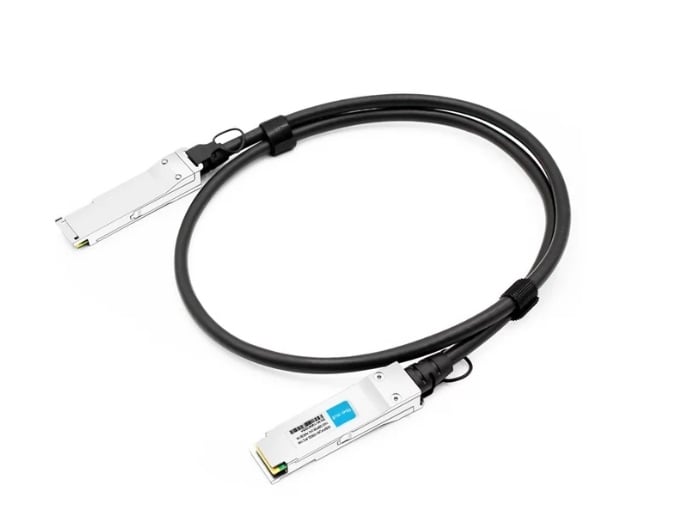
What are the specifications for Direct Attach Copper Twinax Cables?
Direct Attach Copper (DAC) Twinax cables are designed to be used for short-reach, high-speed interconnection within data centers and enterprise networks. The following are the most important specifications that should be considered:
- Length: Different lengths are available including 1m to 7m usually for flexibility in terms of installation.
- Data Rate: The model allows up 10 Gbps, 25 Gbps or even 40 Gbps per second which enables high speed transfer of data.
- Connector Types: To enhance networking equipment compatibility, they normally come with SFP+ or QSFP+ connectors.
- Cable Construction: It is constructed as a twin axel complete with accompanying shielding and two copper conductors to minimize cross talk and electromagnetic interference.
- Gauge: Usually composed of between 22 AWG and 26 AWG copper wire to strike a balance between flexibility and performance optimization.
- Temperature Range: -40°C ≤ T ≤ +70°C is the operational range that assures reliable functioning in various conditions.
These requirements make DAC twinax cables the perfect choice for connecting switches, routers, and servers with the highest efficiency possible while preserving low latency.
How do passive direct attach cables differ from active optical cables?
High bandwidth interconnections within servers and switches are typically implemented using two types of cables, direct attach copper (DAC) cables and active optical cables (AOC), which differ in terms of their operational mechanism and characteristics. Passive DAC cables use copper wires that do not contain any active electronic components; hence, they are simply used to transmit signals directly over a short range. Their performance is limited, though, about distance, usually around 7 meters, because passive DACs may have lower costs and power consumption than AOCs.
Active Optical Cables, on the other hand, are based on optical fibers with embedded transceivers, which convert electrical signals into light signals, thus enabling transmission over long distances—typically up to hundreds of meters. In cases where high electromagnetic interference or weight savings are important, AOCs are more advantageous because they weigh less than copper cables. For these reasons, despite being more expensive and consuming more power, AOCs are recommended for applications requiring high bandwidth and longer distances; this means that in some situations AOCs offer better performance compared to the alternative copper cable.
What lengths do Arista twinax cables come in?
Different connection requirements necessitate that Arista Twinax cables be available in various lengths. These include 0.5 meters, 1 meter, 2 meters, 3 meters, 5 meters, and 7 meters. This range offers a lot of flexibility to cabling solutions which should provide good connectivity across various networking setups yet maintain performance standards.
How Do Arista Cables Compare to Other Network Cables?
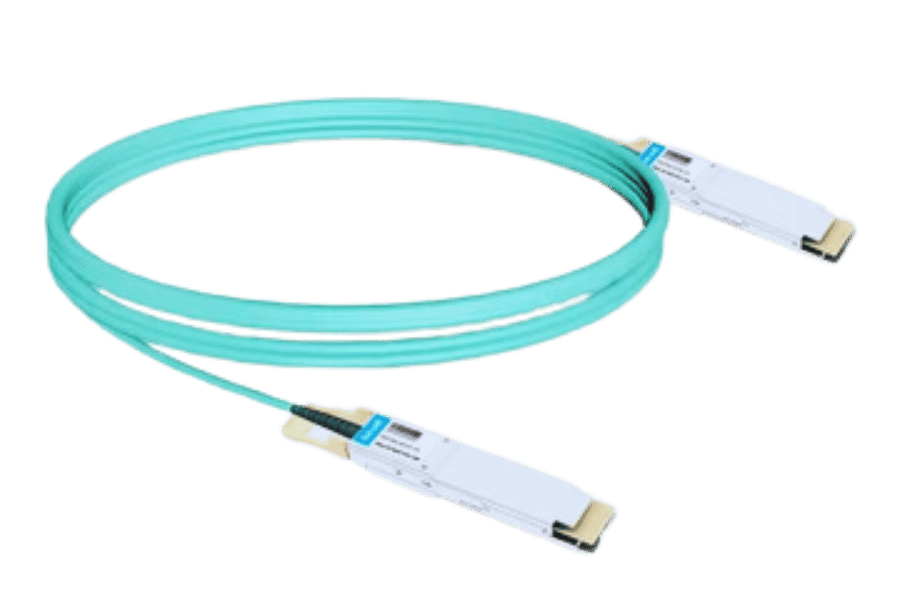
Are Arista cables compatible with other transceivers?
Various Arista cables can be used with different transceivers from both Arista and other vendors, depending on the type of cabling and transceiver involved. Most Arista optic transceivers are designed in accordance with standard specifications like SFP, SFP+, and QSFP+, among others, that allow them to be used interchangeably with other compatible brands. However, it is important to ensure that the chosen transceiver is of the same cable type (copper or optical) and meets the performance requirements for your networking. However, if you use Arista’s transceivers together with their own cables, you are likely to achieve better results because these are optimized for compatibility. Always check specific compatibility charts and recommendations at Arista’s documentation site to avoid any possible issues arising from this matter.
What are the advantages of using Arista Networks cables?
The cables of Arista Networks have many benefits that enhance network performance and reliability. To begin with, the cables are designed specifically for high-speed data transfer, which leads to low latency while saving the bandwidth required to transfer large amounts of data. Secondly, Arista cables are made using top-quality materials that are durable and long-lasting, reducing costs incurred from frequent replacements. Additionally, their compatibility with various transceivers means flexible deployment options for easy integration into existing network infrastructures. Moreover, Arista’s commitment to rigorous testing and quality control ensures that its cables conform to or exceed industry standards, thus providing users with assurance in their networking solutions. Lastly, using Arista Networks cables can simplify network management as they are explicitly built for smooth operation within Arista’s ecosystem, thereby enhancing overall system performance.
How do copper cables compare to fiber optic cables?
There are notable differences in how copper cables and fiber optic cables perform and are used. As a rule, copper cables like twisted wire pairings and coaxial wires tend to be less expensive and easier to install but have distance and bandwidth limitations sometimes leading to signal degradation over long distances. On the other hand, optical fibers offer superior velocity as well as bandwidth that allows for data transmission over longer distances even without quality drop thus making them ideal for high-performance networking environments. In addition, fiber optics are less disturbed by electromagnetic interference, thereby providing a more reliable connection even when in electrically noisy surroundings. However, its installation demands can be much involved and expensive than copper counterparts.
How to Choose the Right Arista Cable for Your Network?
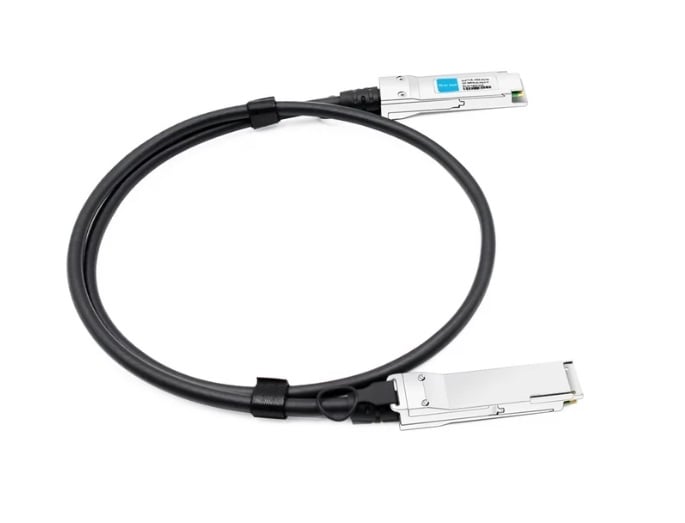
What should you consider when choosing the length of a twinax cable?
While deciding on the right length for a Twinax cable, you should consider the following:
Such factors include but not limited to;
- Distance Requirements: Ensure that the cable length selected can cover a specific distance between devices with consideration to any possible bends or routings.
- Signal Integrity: Long cables may distort signals thus select length that will guarantee best performance.
- Installation Environment: The actual space constraints in the installation room might impact on what is required.
- Future Scalability: Longer cables may be needed when planning for expansion of the system so as to cater for new equipment placements.
Which applications are Arista-compatible 10g sfp transceivers suitable for?
Other high-speed networking applications that these Arista-compatible 10G SFP transceivers find suitability include:
- Data Center Interconnects: Perfect for fast data movement between servers, storage, and network devices in data centers.
- Enterprise Networking: They are good for making sure that routers and switches are well linked in enterprise areas hence supporting cloud computing as well as virtualization applications.
- High-Performance Computing (HPC): Very vital when it comes to quick transmission of data with minimum latency like scientific simulation, research computing among others.
- Telecommunications: It is ideal for core networking and backhaul connections in telecommunications infrastructures where efficient data traffic handling is required.
- Broadcast and Video Production: In media environments where real-time video streaming and production take place, they offer the necessary high-bandwidth connectivity.
Those transceivers create stable and fast connections which are essential for modern network demands in various industries.
How do you determine the compatibility with your network equipment?
To ensure that Arista-compatible 10G SFP transceivers work well with your network equipment, perform these steps:
- Company’s specifications review: Always consult manufacturer’s specification of the transceivers themselves and the network equipment. This encompasses reviewing supported SFP types, maximum distances and applicable protocols. Manufacturers often have detailed documentation of compatible hardware.
- Check for compliance with industry standards: Ensure that the modules are compliant to industry standard protocols such as SFF-8431 for 10G SFP. Implementation guarantees interoperability across multiple vendors’ equipment.
- Use Compatibility Tools: Most manufacturers including Arista provide online resources or databases where users can input part numbers or model numbers to verify compatibility on a specific transceiver. These tools give an insight into configuration which is supportive.
- Consult customer support or community forums: By consulting technical support or using community forums, one can be sure of more security and practical experiences from other users who have successfully combined like devices.
If these guidelines are followed by users, then they can confidently ascertain whether the Arista-compatible 10G SFP Transceivers will work seamlessly in their existing network infrastructure.
What Are the Benefits of Using Arista Cables?
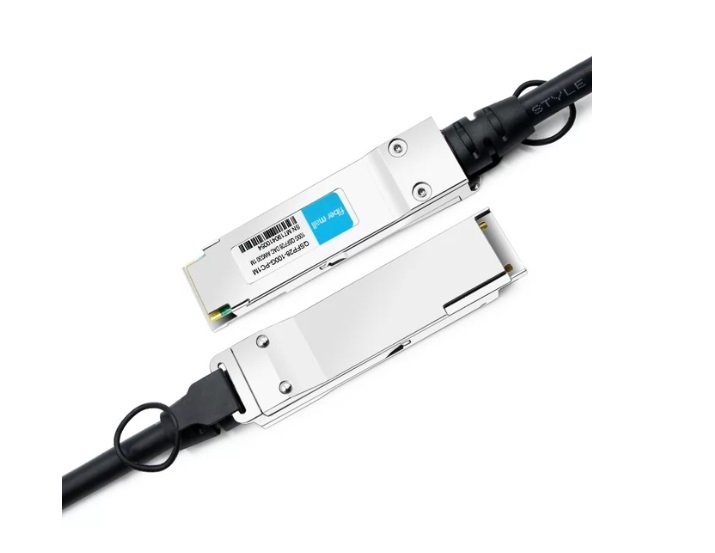
How do Arista cables promote high network quality?
Arista cables have several features that contribute to their high network quality.
- Optimized Signal Integrity: The cabling system is designed with the goal of reducing attenuation and cross-talk, which in turn improves signal clarity while reducing data transmission errors. This is necessary to sustain high bandwidth and reliable network communication.
- Robust Construction: These cables are made from materials that can tolerate environmental stresses like temperature variations as well as physical wear and tear. The resultant durability guarantees consistent performance during diverse operational circumstances.
- Standards Compliance: Arista cables are produced meeting industry standards such as IEEE and TIA/EIA specifications which ensures compatibility and performance consistency across different networking environments. This standard compliance allows integration with already existing hardware without any hitches or glitches thus maximizing overall efficiency at the network level.
- Support for High-Speed Data Transfers: Arista cables facilitate fast data transfer rates going beyond 100Gbps, hence making them critical for data-intensive applications and large-scale enterprises.
In summary, these qualities collectively contribute to network reliability and superior performance achieved through Arista cable use.
Can Arista twinax cables reduce power consumption?
Absolutely, Arista twinax cables are very efficient at minimizing power consumption in network environments. These cables are made with reduced power features that enable data to be transmitted over short distances more efficiently and minimize the amount of energy lost. The use of twinax technology which embeds multiple transmission lines within one cable requires less power as compared to traditional copper or fiber optic solutions. This also saves a lot of energy in data centers and company networks by not having to depend on external power sources or cooling systems due to the fact that they do not generate heat during operation. As such, adopting Arista twinax cables can foster economic and ecological sustainability within networking infrastructure.
What are the cost-effective solutions offered by Arista Networks?
Arista Networks gives a variety of value-effective solutions aimed at maximizing network performance but minimizing operating costs. These encompass scalable cloud networking switches that give high performance at very competitive price points allowing businesses to grow their network capability without significant capital outlay. Moreover, Arista’s SDN capability enables improved resource allocation and dynamic band width management, reducing overestimation necessity. Furthermore, the focus on automation and programmability by Arista makes it easier to manage networks and reduce operational expenses. Thereby, the firm does not need many IT specialists compared to before. In summary, Arista’s solution strikes a balance between initial investment and long-term operational efficiency, thus suitable for companies seeking to improve their networking capabilities with limited budgets.
FAQs About Arista Cables
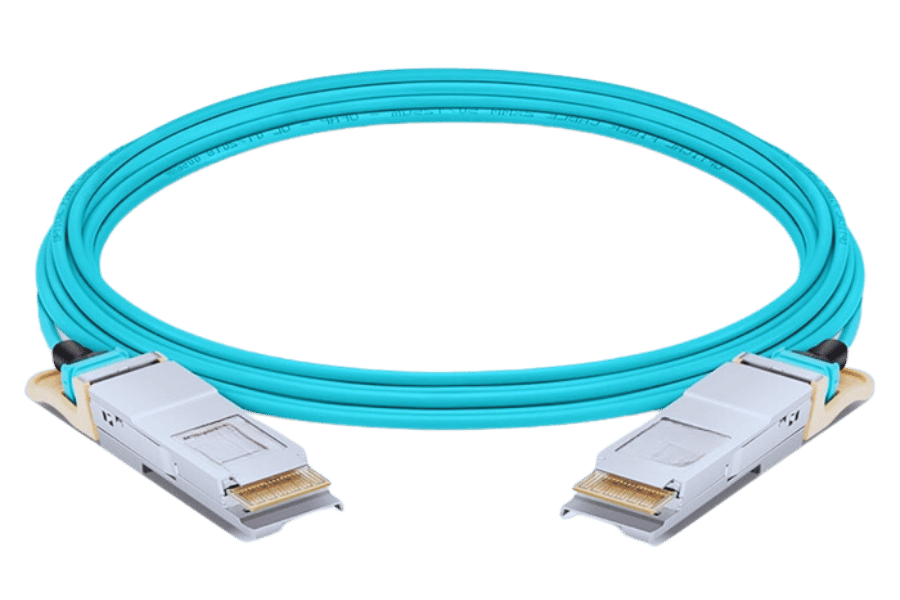
What is the difference between cab-sfp-sfp-2m and cab-sfp-sfp-7m?
The main difference between the two types of cab-sfp-sfp-2m and cab-sfp-sfp-7m cables is their length. The first one is 2 meters long, while the latter one measures 7 meters. Both are used for similar purposes, such as connecting SFP modules, but they have different lengths that restrict their application due to certain network design needs and distances between devices.
How do you use Arista cables within racks and across adjacent racks?
Ensure that the Arista cables are deployed in a way that is able to prevent their mishandling and blocking of air flow. Use other devices meant for the management of cables, for example, wire ties or trays, among other things, so as to keep the wires in line both vertically as well as horizontally. For longer runs between racks, use cables with appropriate lengths, not too long that will have unnecessary slack, which could cause them to get tangled up or damaged. Ensure that such things as the specific data transmission protocols and the correct SFP modules inside should be rated on these wires while you undertake this exercise. Regularly check on those connections for cable integrity thereby maintaining consistent good performance levels.
Where can I buy authentic Arista cables?
Some reputable sources where people can purchase genuine Arista cables are:
- Official Website of Arista Networks – Upon visiting this site, one can get straight to the point and have a look at what is on offer including cables with their specifications.
- Amazon – Amazon has several types of Arista cables, which come with user reviews and competitive pricing, making it easy for customers to buy.
- Newegg – Newegg.com is another online platform that electronics and IT products but also offers some Arista cables; it provides product descriptions that are detailed enough as well as customer feedback.
In conclusion, these platforms guarantee a reliable purchasing experience and maintain the integrity and authenticity of Arista’s products.
Reference Sources
Frequently Asked Questions (FAQs)
Q: What is the functionality of Direct Attach Copper (DAC) cables?
A: Are these Direct Attach Copper (DAC) cables? High performing Direct Attach Copper (DAC) cables offer an efficient and effective solution for short distances. They are made up of copper cables that have transceivers at both ends creating a direct electrical connection between two networking devices such as switches or servers.
Q: What are the advantages of QSFP28 DAC cables for 100G Ethernet?
A: This product line includes QSFP28 DAC cables that directly support 100 Gbps Ethernet with high-speed data transfer rates. Also, their low latency and high data throughput capabilities make them suitable for use in high-performance computing (HPC) environments. In addition, they cost less and consume less power than their optical transceiver counterparts do.
Q: How do I know which length to order for my DAC cable?
A: The length you will choose depends on how far apart your network devices are. Typical lengths include 1m, 2m, 5m or even more than that up to 15m It is important that you accurately measure this distance so that your cable reaches the rack ports without leaving too much slack or tension.
Q: Do Arista DAC Cables work with other vendors’ equipment?
A: Yes. Arista tests its products against a variety of networking equipment from other vendors to ensure compatibility.
Q: What differentiates passive DAC from active optical transceivers?
A: Passive DACs convert electrical signals and are designed for short-range applications (typically <7 m). They need little electricity thus can be bought cheaply. Active optical transceivers on the other hand change electrical signals into as well as transmit them over long distances (>7 m), typically having a higher bandwidth capacity than others.
Q: Can 4x10G breakout DAC cables be used with QSFP ports?
A: Absolutely, 4x10G breakout DAC cables really can split a single 40G QSFP port into four individual 10G SFP+ ports. This helps to create more flexible network configurations and maximizes the use of available switch ports.
Q: What are the standard compliance and certifications for Arista DAC cables?
A: In addition to IEC specifications, Arista DAC cables meet other industrial standards and undergo performance and reliability testing. The goal of this is to ensure seamless connectivity and data integrity across your network.
Q: How does cable gauge affect the performance of DAC cables?
A: There are several different gauges in which DAC cables can be purchased such as; 24AWG or 30AWG among others. Thicker (lower AWG numbers) cables have better electrical conductivity, making them ideal for longer distances but are less flexible. Smaller (higher AWG numbers) gauge sizes are more manageable but only suitable for shorter distances.
Q: What media types can be replaced with DAC solutions?
A: Instead of short-reach optical transceivers used in data center interconnects and within-rack connections, these may all be substituted by DAC solutions. They provide a cost-effective option that doesn’t compromise on quality hence they are recommended for gigabit ethernet as well as other high speed applications.
Q: How does using DAC cables help in reducing network latency?
A: Notably, instead of using an optical transceiver that has intervening steps such as electrical-to-optical conversion followed by optical-to-electrical conversion, there’s a direct electrical connection between devices when one uses a DAC cable. As such, low latency is crucially important in HPC environments and high-frequency trading where these types of direct connections benefit from decreased network latency since there isn’t any intermediating step involved like converting electrical to optical and then back to electrical.
Related Products:
-
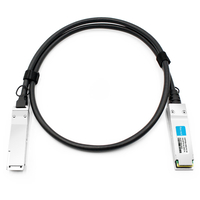 Arista Networks CAB-Q-Q-100G-1M Compatible 1m (3ft) 100G QSFP28 to QSFP28 Copper Direct Attach Cable
$25.00
Arista Networks CAB-Q-Q-100G-1M Compatible 1m (3ft) 100G QSFP28 to QSFP28 Copper Direct Attach Cable
$25.00
-
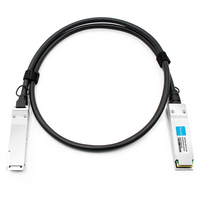 Arista Networks CAB-Q-Q-100G-2M Compatible 2m (7ft) 100G QSFP28 to QSFP28 Copper Direct Attach Cable
$35.00
Arista Networks CAB-Q-Q-100G-2M Compatible 2m (7ft) 100G QSFP28 to QSFP28 Copper Direct Attach Cable
$35.00
-
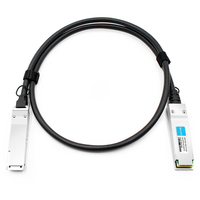 Arista Networks CAB-Q-Q-100G-3M Compatible 3m (10ft) 100G QSFP28 to QSFP28 Copper Direct Attach Cable
$43.00
Arista Networks CAB-Q-Q-100G-3M Compatible 3m (10ft) 100G QSFP28 to QSFP28 Copper Direct Attach Cable
$43.00
-
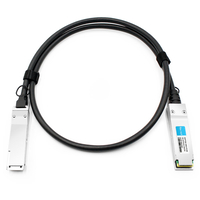 Arista Networks CAB-Q-Q-100G-5M Compatible 5m (16ft) 100G QSFP28 to QSFP28 Copper Direct Attach Cable
$60.00
Arista Networks CAB-Q-Q-100G-5M Compatible 5m (16ft) 100G QSFP28 to QSFP28 Copper Direct Attach Cable
$60.00
-
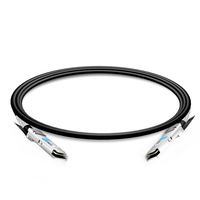 Arista Networks C-Q200-Q200-3M Compatible 3m (10ft) 200G QSFP56 to QSFP56 PAM4 Passive Direct Attach Copper Twinax Cable
$80.00
Arista Networks C-Q200-Q200-3M Compatible 3m (10ft) 200G QSFP56 to QSFP56 PAM4 Passive Direct Attach Copper Twinax Cable
$80.00
-
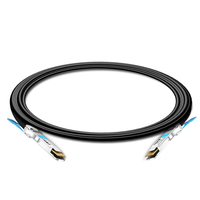 Arista Networks CAB-D-D-400G-1M Compatible 1m (3ft) 400G QSFP-DD to QSFP-DD PAM4 Passive Direct Attach Copper Twinax Cable
$90.00
Arista Networks CAB-D-D-400G-1M Compatible 1m (3ft) 400G QSFP-DD to QSFP-DD PAM4 Passive Direct Attach Copper Twinax Cable
$90.00
